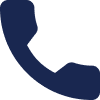Servicing,
Fork Wear and Inspection
Fork Wear & Inspection
Why Inspect Forks?
Forks are safety items. The value of the daily transported goods runs into billions of dollars. Therefore highest attention should be paid to a regular inspection of forks.
What is laid down in standards?
The international standard ISO 5057 specifies methods for inspection and repair of forks. Beside that, a variety of national standards exist such as ASME/ANSI B56.1 and AS2359 which contain additional requirements on inspection of forklift trucks and forks. Also the responsibilities for users and owners of forklift trucks are defined therein.
When should forks be inspected?
The standards mentioned above provide for the inspection at least every 12 months. Depending on the application, e.g. multi-shift operation or rough working conditions, test intervals should be reduced accordingly. Furthermore, operators of the lift-trucks are responsible for carrying out regular visual inspections. The visual inspections should be at least daily. As soon as any defect is visible, the forks should be taken out of service.
What has to be inspected?
-
Wear – If 10% of the original fork thickness has been worn, the fork has to be taken out of service. (A 10% reduction in fork blade thickness results in a capacity reduction of 20%).
-
Cracks on the surface.
-
Straightness of the blade and back.
-
Fork angle.
-
Height difference of fork tips.
-
Locking devices.
-
Damage / wear of the fork tip.
-
Lateral bending or wear of the fork hook.
-
Legibility of marking
The yearly inspection should be carried out carefully only by trained personnel. That service is mainly provided by acknowledged forklift service companies. The daily visual check has to be done by the user with the aim of detecting any damage to the fork, which may impair safe use. Any fork, which shows a defect, shall be withdrawn from service.
Who carries out repairs?
Only the manufacturer of the fork arm or an expert of equal competence shall decide whether and how a fork may be repaired. Forks with any surface cracks or wear have to be scrapped. When repairs necessitating re-setting are required, the fork arm shall subsequently be subjected to an appropriate heat-treatment, as necessary. In case of some repairs the fork shall only be returned to service after passing a load test in accordance with the relevant standard.








